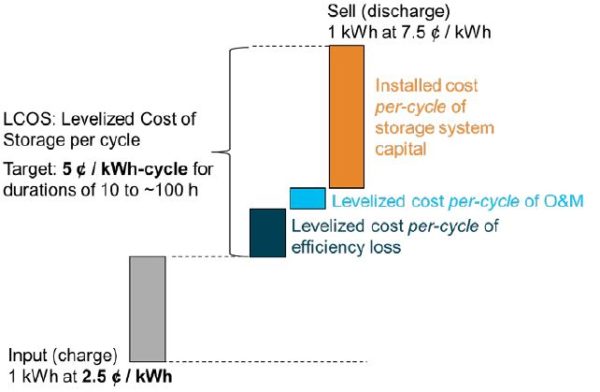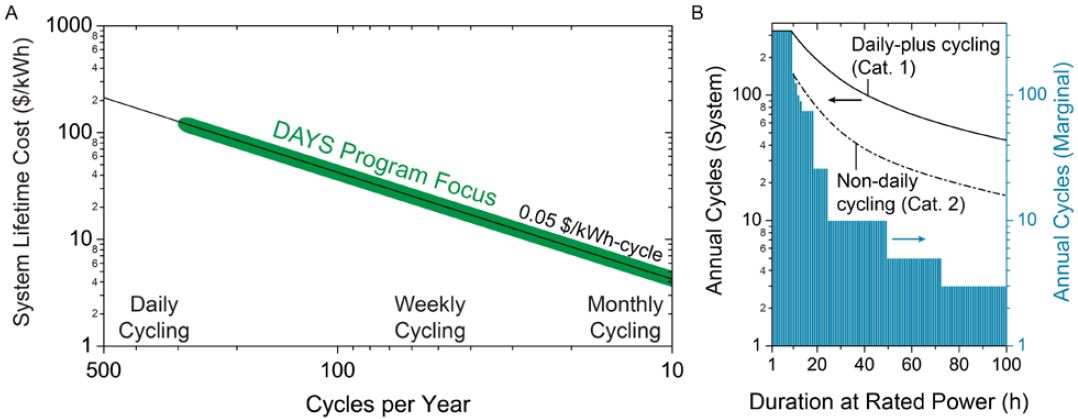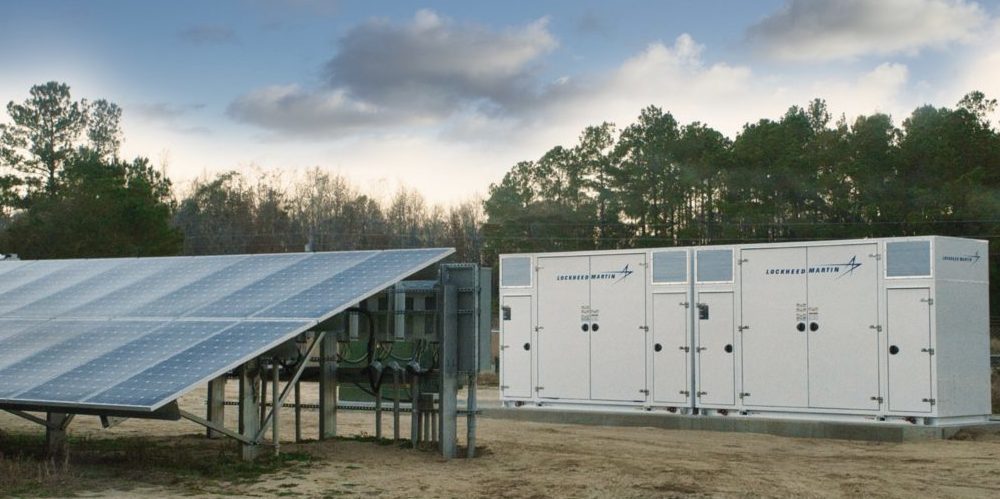In order for power grids to rely mostly or entirely on intermittent energy sources such as wind and solar power, we’re going to need a lot of energy storage. Some studies have suggested that the United States would need 12 hours of energy storage in order to meet 80% of our grid needs from wind and solar, and in order to hit 100% wind+solar – without oversizing capacity or nationwide HVDC – the same study says we’ll need three weeks of energy storage.
While current technologies – namely lithium ion batteries – can technically run for as many hours as is needed, it is assumed that this technology won’t scale well due to its cost.
With that, the U.S. Department of Energy’s (DOE) Advanced Research Projects Agency-Energy (ARPA-E), has put out a request for projects to develop energy storage systems that provide power to the electric grid for durations of 10 to approximately 100 hours, or up to a month.
The program application page can be found here.
The DAYS program (Duration Addition to electricitY Storage) seeks two categories of projects – 1) DAYS systems that provide daily cycling in addition to longer duration, less frequent cycling and 2) DAYS systems that do not provide daily cycling, but can take over when daily cycling resources are either filled or depleted.

The program’s LCOS (Levelized Cost of Storage) target is 5 center per kilowatt-hour (kWh)-cycle, and ARPA-E suggests it likely requires system round-trip efficiencies greater than 50%. ARPA-E believes that long durations and infrequent cycling provide opportunities for design tradeoffs that may be leveraged to reduce costs and realize economically-viable long-duration energy storage systems. As can be seen in the image above, the goal is to be able to resell the wind and solar power, when including the generation costs of 2.5¢/kWh at 7.5¢/kWh.

The program also considers that some opportunities will offer energy storage systems that don’t provide frequency services and cycle 10 times in a year.
Below are some of the goals of the program (located in the technical overview:

With large-scale solar and wind power now offering the cheapest sources of electricity on the planet, and broad swaths of society favoring solar and wind over sources of electricity, it is fair to assume that there will be far more solar+wind installed than any other electricity source. The question had always been what do we do when the sun doesn’t shine or the wind stops blowing – problems which are much more significant due to seasonal variations in solar output in northern latitudes.
Soon enough, those questions may be answered in 10, 100 and one month increments.
This content is protected by copyright and may not be reused. If you want to cooperate with us and would like to reuse some of our content, please contact: editors@pv-magazine.com.









By submitting this form you agree to pv magazine using your data for the purposes of publishing your comment.
Your personal data will only be disclosed or otherwise transmitted to third parties for the purposes of spam filtering or if this is necessary for technical maintenance of the website. Any other transfer to third parties will not take place unless this is justified on the basis of applicable data protection regulations or if pv magazine is legally obliged to do so.
You may revoke this consent at any time with effect for the future, in which case your personal data will be deleted immediately. Otherwise, your data will be deleted if pv magazine has processed your request or the purpose of data storage is fulfilled.
Further information on data privacy can be found in our Data Protection Policy.